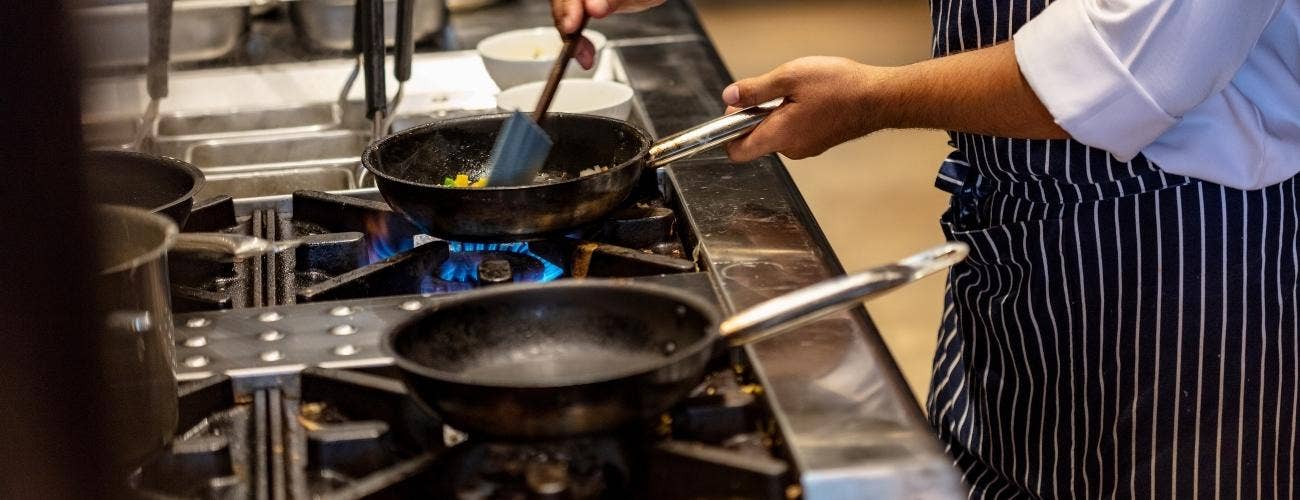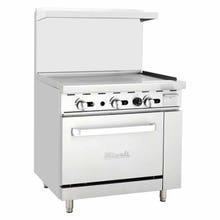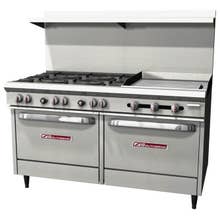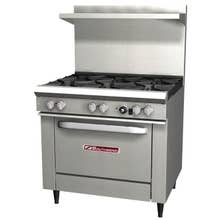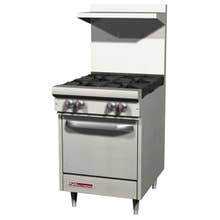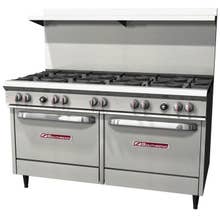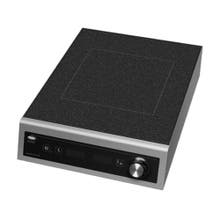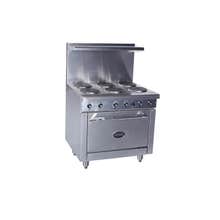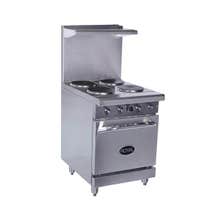Commercial Ranges Buying Guide
By: Restaurant Equippers • Jan. 7, 2025 • 5 minute read time
Commercial Ranges Buying Guide
Choosing the right commercial range is crucial for any food service establishment. It can significantly impact the efficiency and productivity of your kitchen. This Commercial Ranges Buying Guide aims to provide a comprehensive overview. We'll cover everything you need to know before making a purchase. We'll delve into the different types of commercial ranges. These include gas ranges and electric ranges. We'll also discuss the key features to consider. Size, capacity, BTU ratings, and range configurations are all important factors. Whether you're a restaurant owner, a chef, or a kitchen manager, this guide is for you. Let's dive in and find the perfect commercial range for your kitchen.
Types of Commercial Ranges
Commercial ranges come in two primary types: gas and electric. Each has distinct features and benefits. Understanding these differences is crucial for selection. Gas ranges allow for immediate heat control. They offer consistent heat and are ideal for cooking techniques that need precision. They remain popular in many commercial kitchens. Electric ranges allow even temperature distribution. They use either radiant or coil elements to provide uniform heat. They're best in environments where electricity is more reliable than gas. Selecting the right type depends on your kitchen's specific needs. Available resources and desired cooking methods should guide your decision. Aligning these elements ensures your range fits your operations.
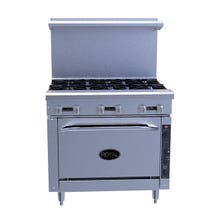
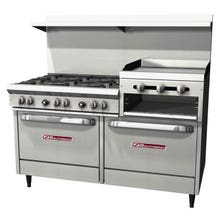
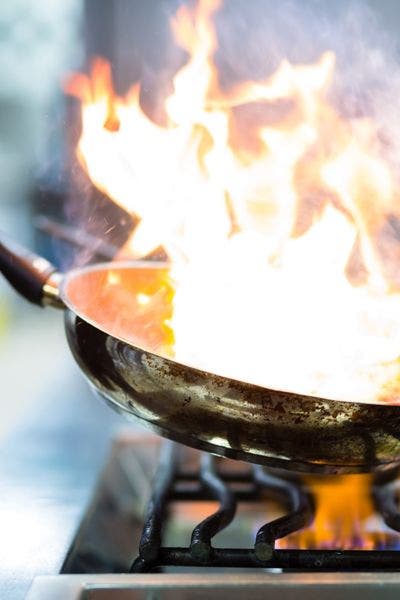

Gas Ranges
Gas ranges are a staple in many commercial kitchens. They provide instantaneous, easily adjustable heat, allowing chefs to adjust cooking temperatures quickly.
One of the main advantages is natural gas's cost-efficiency. It can be cheaper than electricity, lowering operational costs. Many chefs also appreciate gas burners' responsiveness.
Another benefit is the broad range of BTU options, from low simmers to high sears. This versatility accommodates diverse cooking techniques. However, it requires a reliable gas supply and ventilation system.
Electric Ranges
Electric ranges offer different advantages. They are celebrated for their even heat distribution, which is crucial for consistent cooking and minimizes cold or hot spots during food preparation. Their steady temperature is perfect for baking, where precision is critical. Electric ranges are easier to install in areas without gas lines, offering flexibility in location. Despite their benefits, electric ranges often heat up and cool down slower than gas ranges. This might result in higher energy bills if electricity costs exceed gas expenses.
Size and Capacity
The size of a commercial range dictates its placement in the kitchen. Consider available space and workflow efficiency. Your range should match the kitchen's layout and not obstruct movement. Capacity is equally important. It should match your kitchen's expected output. Ensure the range can handle your busiest days and cook everything you need.
BTU Ratings and Cooking Performance
BTU ratings measure the heat output of gas ranges. Higher BTUs mean quicker cooking times and better control. This is crucial for high-heat tasks like searing and frying. Select BTU ratings that match your menu's needs. A range with diverse burner ratings can handle varied cooking tasks. Assess these ratings to ensure they align with expected kitchen performance.
Range Configuration
Range configurations enhance a kitchen's capabilities. Standard ovens offer basic baking and roasting functions, while convection ovens provide faster, more even baking. Combination ranges include various features and meet multi-cooking requirements. Consider your menu and evaluate which configuration boosts efficiency. Proper configurations can elevate your culinary offerings and broaden your menu.
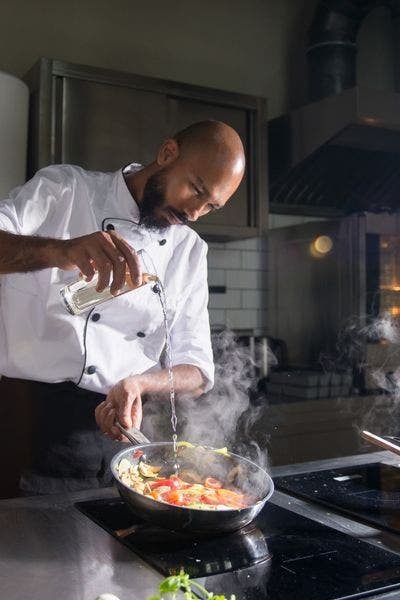

Griddle and Charbroiler Options
Griddles add a versatile element to your kitchen arsenal. They are perfect for a variety of foods, like pancakes, burgers, and more. These items enrich your menu with diverse offerings.
Charbroilers provide the unique, much sought-after grilled flavor. They are ideal for meats and vegetables that benefit from intense, direct heat. This feature can elevate your menu's appeal significantly.
Whether you specialize in brunch or dinner, griddles and charbroilers help you deliver consistent results. These options allow your kitchen to cater to different culinary preferences, enhancing customer satisfaction and operational capacity.
Modular Ranges for Customization
A modular range offers flexibility to fit any kitchen. It allows for tailored configurations specific to your cooking demands. You can select exactly the components that suit your workflow.
This customization is beneficial in spaces with specific culinary focuses. For instance, a bakery may choose added ovens, while a grill house could opt for a range with a griddle or charbroiler. This adaptability maximizes space and efficiency.

